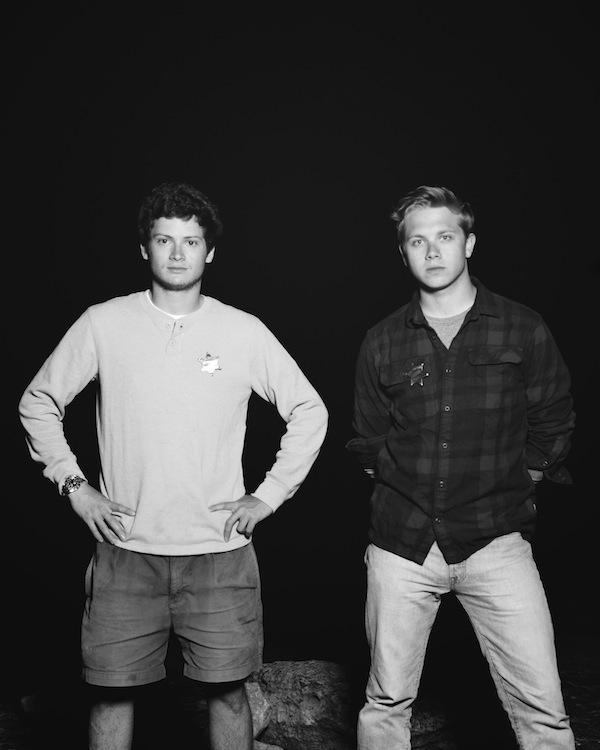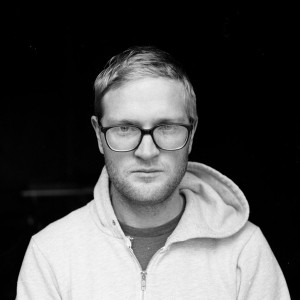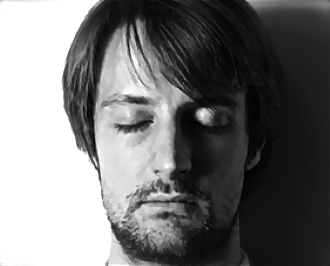On the road with Matteo Zevi & Alexander Gerson
MATTEO ZEVI and ALEXANDER GERSON are the co-founders of GERSON ZEVI and the creators of LAND ART ROAD TRIP. Alex earned a degree in Comparative Religion from Harvard, where his primary academic focus was on the intersection of South Asian theological aesthetics and contemporary film theory. Matteo has a degree from Harvard in Liberal Arts, concentrated in Political Science. Both are passionate about changing how people access the art world. Their other passions include travel, the American west, and land art. They are believers in the value of experiential artistic adventures in making a difference for young artists.
Interview by Will Kitson
Firstly, please tell us about Land Art and why it resonates with you on a personal level. Two years ago, frustrated by the claustrophobia of the New York art world, we leapt upon a chance to join a land art adventure planned by a friend. Traveling through the Southwest, we fell in love with the art and the landscapes, and began to see a solution to our problems back in New York. The original land artists – De Maria, Holt, Heizer, and Smithson – used these wide open spaces to express a powerful and rebellious message of creative freedom, far from the confinement of the big city. We were inspired by the majesty and delicacy of these gestures, and what they stood for, and aspired to express our own message in solidarity with our new heroes.
What specifically inspired you to create the Gerson Zevi Land Art Road Trip?
When we began to plan our return trip to the Southwest, we knew that it was not enough for us to go in our capacity as gallery owners. Instead, we realized how important it was to share this experience with other people, especially those who could benefit from it creatively. We consistently notice how difficult it is for the young and talented artists that we work with to remove themselves from their local spheres of influence, due to the tremendous amount of financial and creative pressure that is imposed upon them by the current art world. We believe that it’s more important than ever to offer them creative and affordable outlets to develop their practices, and The Land Art Road Trip is a great way to do so.
The 2013 Gerson Zevi Land Art Road Trip from Gerson Zevi on Vimeo.
A large aspect of the project is about reconnecting with the natural world. Tell us about the spiritual impact that this has on you and the participants.
Free from the confines of a gallery or sculpture park, works of land art become part of the landscape, fully immersed in their environment, which becomes inseparable from the work. When we are in the field, all of our senses are constantly stimulated, tying us powerfully to the world around us, and the works that inhabit it. At Nancy Holt’s Sun Tunnels, for example: the sight of a glowing red sunset, the sound of an unseen freight train, the smell of far-off wildfires, the taste of dusty desert air, and the cool touch of concrete. These are all a part of the work, indivisible from it, yet far beyond the control of the author. This revelation, and many others like it, teach us to slow down, to think more carefully about where we are, and to experience everything in a fuller, richer way, which we hope is reflected in the works of art created by our fellow travelers.
At Seymour we believe that it’s important to disconnect from technology every once in a while. How have you and your fellow adventurers found this experience on your trips?
Most of the participants realized how important it was to disconnect from the typical distractions afforded by technology during the trip, although there was a great urge to share the adventure with our friends and family through social media. The immensity of some of the places that we visited, however, often exposed the inherent impossibility of capturing an experience in a single image or thought. It was humbling.
For the most part, the trip comprises of practicing creative people. In your experience, how has their creative process and work evolved during, and after, the road trip?
It was important that the participants use their experiences on the road to disrupt, or at least inspire, their practices. We knew that this would be contingent upon both the collaborative ethos of the journey and the landscape that we were traveling through. For the painters on the trip, this meant experimenting with new palettes, which were influenced by the colors of the high desert. For the photographers, this meant adapting to the bright and cloudless sky and vibrant sunsets. For the writers, this meant working with the artists to develop new ways to write about art and art experience. Initially, we weren’t sure what to expect in terms of creative development, but we were very pleased with the work that was done during the trip, and continue to hear from last year’s participants that the trip remains an influential part of their practice.
Tell us about your most profound experience on the road.
In a journey full of magical sunsets, star-filled skies, staggering views, and thoughtful conversations, profoundness can be hard to measure. In a few weeks we will hit the road for the fourth time (we are still accepting applications through our website) and we know we will be moved all over again. Engaging in experiences that are so consistently meaningful and revelatory, perhaps it is easier to gauge the value of what we do by a comment made by someone outside our group. Asked if she thought we were crazy for coming all the way out to The Lightning Field, the daughter of the site’s caretaker, who grew up on a farm a few miles from the work, shared this insight: “I do crazy things too, like breaking horses and tipping cows. Art’s your passion; we all have our passions.”
W.K. 2014
Published: May 27th, 2014






